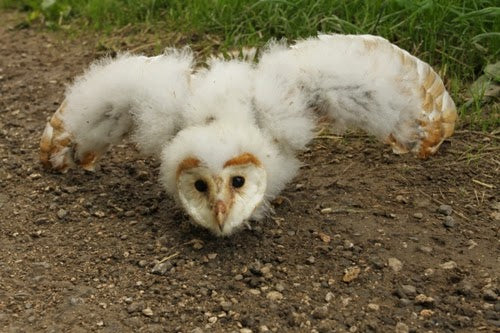I came across this barn owl chick on a road side this week. Poor thing had fallen out of its nest and was desperately flapping away to no effect!
I stopped and put it back in its nest with its siblings - all members of a late brood. This long warm spell we are currently enjoying has meant that some barn owl pairs have been able to go on to have second broods -which is very good news for local populations.
The barn owl population near me in Thixendale, north Yorkshire, was so low last year that I supplement-fed a pair through the winter and was delighted when they went on to breed and five chicks hatched - and fledged - successfully over the summer.
The pair went on to have a second brood of three chicks and these are now two weeks old. I hope the weather doesn't turn bitter too soon but I intend to continue to supplement-feed the family if it does. It is so important to try to restore the populations here.
I had found this chick whilst driving to Burton Agnes Hall near Bridlington where an exhibition of my work is currently on show.
This Elizabethan country house is one of the finest examples of the period and it has been a great privilege to be able to hang my paintings of wildlife alongside the impressionist masters.
My exhibition was a celebration of the wealth of creatures that inhabit the 50-acre grounds of this Tudor stately home and whilst planning I got thinking about how important England's landscaped parks are for wildlife.
According to Burton Agnes owner, Simon Cunliffe-Lister, roe deer graze on the lawns in the early mornings and he often sees barn owls flit past the mullioned windows!
My exhibition is on show there until October 5th and tomorrow I plan to take my two young daughters to explore the award-winning gardens there and see what other wildlife we can find in the grounds.


















